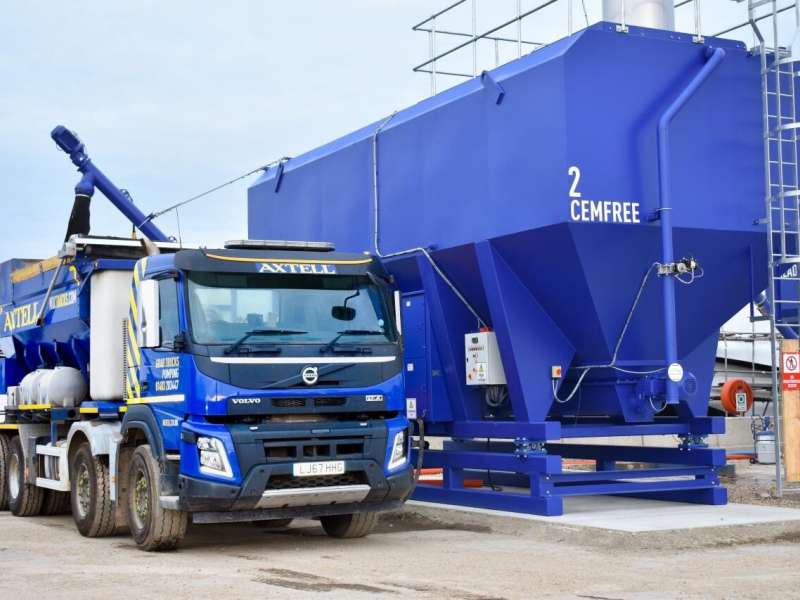Do you need a Concrete Mix For a Large Construction project? Do you know the differences between the different types of concrete mixes? This article will answer both of these questions. Read on to learn the different types of concrete mixes and what you should use on your project. You’ll want to follow the instructions closely so you don’t end up with a subpar concrete project. Listed below are the most common types of concrete mixes and what they do for a construction project.
What Are Different Types Of Concrete Mix?
Concrete is a widely used material for many purposes in construction. It is composed of cement, sand, and aggregates, and sets up into a strong rock-like mass in a short amount of time. Concrete Mix For Large Construction compositions varies according to the use for which it is intended, but the basics are the same. These materials are mixed with water in a specific ratio, and when mixed, they harden into a strong stone-like substance. The different types of concrete are used for different purposes and are available in many different forms.
The C grade of concrete refers to its strength. A C30 mix is 30 newtons in strength. A C40 mix has a strength of 40 newtons, while a C50 mix is 50 newtons. Mix designs can either be nominal or design. The nominal Concrete Mix For Large Construction is used in domestic construction, small construction projects, and light structures. A design mix is made from a specified ratio of aggregate and cement based on the number of available materials. It is typically used for buildings and other large structures due to its durability and low cost.
What are the different types of Concrete Mix For Large Construction for large-scale construction? For large-scale construction projects, volumetric concrete is the best choice. This type of concrete is made to meet the precise requirements of the job and allows you to pay for only what you need. Volumetric concrete is ideal for large construction projects, multi-projects, and basement construction. You can even add pigments or fibres to decorative concrete to make it look more attractive.
Best Concrete Mix For Large Construction Projects?
When it comes to a Concrete Mix For Large Construction project, a proper mix of concrete is imperative. Many types of concrete have different strengths and properties, and the best mix for a certain application will vary from project to project. There are many advantages to choosing the right mix for your project. Here are a few of them:
The compressive strength of the concrete is important. A Concrete Mix For Large Construction footing should be able to support at least 3500 pounds per square inch of pressure. A good mix of concrete should have a psi of between 4,000 to 5,000 psi, which is equal to 27.5 to 34.5 MPa. In addition to this, concrete footings should have at least three times as much pressure as the structure that will be placed on top.
The amount of water used is also important to consider when choosing the right mix. The PCA handbook recommends that the w/c ratio of the concrete batch should be as low as possible. In general, the lower the water content, the more cement the Concrete Mix For Large Construction will contain. This means that the mix must be specified to be as water-free as possible, or the cement content should be matched with the project’s needs.
Different Concrete Mix For Large Construction
When you are building a large-scale structure, you will likely need a different type of Concrete Mix For Large Construction than a small-scale project. Different types of concrete have different strengths and properties, and your mix design will depend on these properties. For large-scale construction projects, however, you may require a different mix for specific purposes. The ingredients will also vary based on the location of the project. The most commonly used concrete mix is the normal performance concrete mix, which has a compressive strength between twenty and forty MPa. It must also be plastic and semi-fluid and should have high workability.
For smaller-scale construction, you can use a plain concrete mix. This concrete is made using the standard 1:2 Concrete Mix For Large Construction ratio. It takes between 30 minutes to 90 minutes to set. This type of concrete is used for buildings and pavements without high-tensile strength requirements. However, it is not the best choice for larger-scale structures because it cannot withstand vibrations or wind loading. You should check with your contractor or concrete mix supplier for specific recommendations and specifications.
The ingredients of Concrete Mix For Large Construction are water, cement, and aggregates. The larger the aggregates, the stronger the concrete. The cement makes up about 10 to 15% of the mix. When mixed with water, it forms a dense mass that hardens over several weeks or months. Eventually, the concrete will harden into a durable rock. This process is ongoing, and the older the concrete, the stronger it will be. There are twenty-four different types of concrete.
Concrete Mix For Large Construction
To design the right concrete mix for your large construction project, you’ll need to know how much water and cement to use. The proportions of the two ingredients determine the final consistency of the concrete, which governs its strength, durability, and workability. A higher ratio of cement will create a stronger, stiffer concrete, while a lower ratio will produce a weaker, more workable material. The proportions of large and small aggregates in your Concrete Mix For Large Construction should be proportional to the amount of cement you’ll need.
Ready-mixed Concrete Mix For Large Construction is a mixture that comes pre-mixed with water. This type of concrete is for larger construction projects where you won’t need to mix it yourself. This type of concrete is typically delivered in a small trailer and is more expensive than dry mix. You may have difficulty finding this type of concrete, so you’ll need to work fast to get the right amount of concrete. It’s best to work with concrete as soon as possible and be aware of how much water you need to use.
The most common type of concrete is ready-mix, which is manufactured at a batching plant and transported to the job site via a drum mixer. You can also use volumetric concrete, which is produced at the construction site with a mobile batching plant. Volumetric concrete is more versatile and can be adjusted on the job site. However, you should keep in mind that you should order a Concrete Mix For Large Construction that matches the requirements of your particular project.
Quality Concrete Mix For Large Construction
When it comes to large construction projects, the quality of the Concrete Mix For Large Construction can play an important role. It’s crucial to choose the correct type and the proper proportion for each job. Usually, ready mix concrete is preferred for these projects, as it saves time and space. Large construction sites see constant truck traffic and storing containers and concrete mix would make the site crowded and unsafe for workers. Fortunately, there are several ways to get high-quality concrete mix at affordable prices.
The most common Concrete Mix For Large Construction projects is four-two-one. It consists of four parts crushed rock and two parts sand, with 15 to 20 percent cement. This combination can be mixed on any scale, ranging from shovels to buckets on a front loader. The exact proportions will depend on the concrete mix’s strength and workability requirements. To achieve this, you’ll need to know where the construction site is located.
The Concrete Mix For Large Construction should be ready for use within one or two hours. If you’re working on a large construction project or Home Renovation. it’s crucial to choose a high-flow concrete mix. This type of concrete can be poured very quickly and is much stronger than a basic mix. This type of concrete is also ideal for aesthetic and architectural work. It’s also available in many different textures and colours. This type of concrete is also ideal for dam construction.
Concrete Mix For Large Construction Projects
There are two basic types of Concrete Mix For Large Construction. The first is ready-mixed concrete, which is manufactured in a central plant and transported to the construction site in a ready-to-use state. Ready-mixed concrete is a cost-effective solution for large construction projects, especially those with limited on-site space. In-transit mixers are small pieces of machinery that are typically seen near construction sites. These trucks mix the raw materials in a variety of ways.
If a project calls for a specific compressive strength, a pozzolanic material can be added to the Concrete Mix For Large Construction to reduce the amount of cement. This can help the mix achieve higher strength, but it can affect the workability of the mix. A pozzolanic material’s specific gravity will determine how much of the material should be added to the mix, as well as the proportion of water and cement that is allowed to remain in the mixture.
While nominal Concrete Mix For Large Construction is most common in ordinary construction, a design mix should be used to ensure the structure’s strength and durability. Depending on the project location, the actual mixed ingredients will vary. Most projects will call for a normal-performance mix with a compressive strength between twenty and forty MPa. This mix is usually clean and semi-fluid, which means that it is easy to mould. If the project requires a special mix for the project, you may have to consult a professional concrete engineer to determine which mix will be best for your needs.
Concrete Mixes
When it comes to the Concrete Mix For Large Construction, there are two basic types: nominal and design. The former is used for ordinary construction and is commonly the 1:2 cement-to-sand ratio. Both are calculated by weight or volume. The latter relies on proportions finalised in laboratory tests and specifies the strength of the concrete. The design mix will also specify the amount of aggregate and water-cement ratio to be used for a particular structural design. Machine mixing is used to mix concrete. This process uses different types of machines and produces fresh concrete.
The ratio of the cement and aggregates to water is important for the desired durability. For example, a design for a foundation should include a Concrete Mix For Large Construction mixture of one part cement two parts sand, and three parts gravel. This ratio will ensure maximum strength for the concrete while maintaining its workability. Generally, it is possible to use half the concrete mixture for later use. But it’s important to note that the design ratio is only a guideline. It should never exceed eight per cent.
Ready-mixed Concrete Mix For Large Construction is transported to the construction site by truck. A transit mixer truck typically has a chute that places concrete on-site near truck access. Other methods include crane hoppers or truck-mounted conveyors. Some mixes are also suitable for pumping. Regardless of the method of transport, there are numerous advantages and disadvantages to consider when selecting a concrete mix. For your next big construction project, choose a concrete mix that meets the specification.





